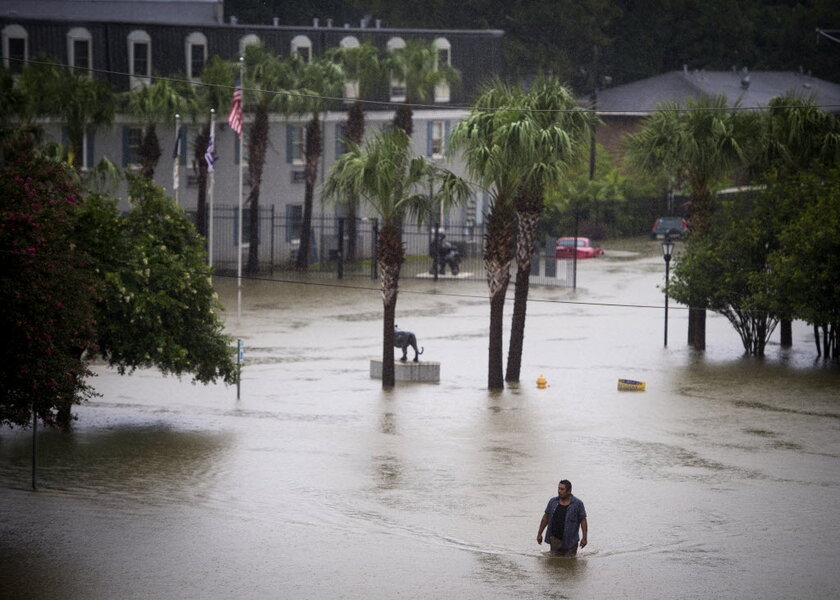What effect did climate change have on the Louisiana floods?
Loading...
Scientists have struggled for years to connect severe weather events to climate change, but a new study examining the floods that devastated Louisiana last month revealed that rising temperatures about doubled chances for such heavy rainfall.
A collaborating study between the NOAA's Geophysical Fluid Dynamics Lab, Princeton University, the Dutch weather agency, and Climate Central, a research and communication organization, found a presence of a global warming signal in the data collected by simulating weather conditions surrounding the floods. This link marked one of the first times researchers have been able to draw a connection between how Earth's climate has changed over time and how singular, specific weather disasters occur as a result.
"In the study, we say we that the probability at least 40 percent, probably doubled, and that is because of climate change," Karin van der Wiel, the study's leader and a researcher at Princeton University, tells The Christian Science Monitor in a phone interview. "That is really very strong evidence."
Last month, a three-day rain storm drenched Baton Rouge and the surrounding areas in southern Louisiana. The storms dropped more than 26 inches of rain in a week, killing 13 people and leaving around 150,000 homes damaged, according to the National Oceanic and Atmospheric Administration.
A storm such as this in the Gulf of Mexico typically occurs once every 50 years. But rising temperatures and greenhouse gases led the storm to become a disaster likely to impact the area every 30 years or less, the study found.
To uncover the link between climate change and those three rainy days, researchers recreated atmospheric conditions as they were in Louisiana during the 1900s and today, taking into account the ozone layer and level of greenhouse gases. In the modern day simulation, a rain storm of last month’s magnitude became more likely to occur, Dr. Wiel said.
The findings reveal an increase in the likelihood of heavy rain in the area, meaning that changes in the atmosphere increase the chance of rain, but don't necessarily create it.
So, what Wiel found is that "it's more likely to rain like this now than it was 100 years ago," and that's because of changes in the atmosphere caused by greenhouse gas emissions.
Establishing a link between weather disasters and climate change has long posed a problem for scientists, as the complexities associated with such events led them to be cautious with any attribution. Earlier this year, however, The Washington Post reported that researchers had uncovered more concrete evidence depicting a relationship between certain specific weather events and a warming planet caused by greenhouse gas emissions.
"Climate change can no longer be viewed as a distant threat that may disrupt the lives of our grandchildren, but one that may be singled out as a factor, possibly a critical factor, in the storm that flooded your house last week," Heidi Cullen, the chief scientist at Climate Central, wrote in a New York Times op-ed earlier this year. "The science of extreme weather attribution brings climate change to our doorsteps." Dr. Cullen is also credited in the study led by Wiel.
Still, the accuracy of such attributions varies depending on the type of weather. Scientists can attribute heat and cold to climate change with high confidence, and either heavy rainfall, like that in Louisiana, or drought, with medium confidence.
Improved technologies are allowing researchers, including Wiel's team, to better understand what weather events have become more likely as a result of climate change, and which are occurring based on their regular likelihood.
"You can really, really, set very carefully what you want to investigate," Wiel said. "Our climate models improve every year. We can investigate more and more of what we see outside in a reliable way."







